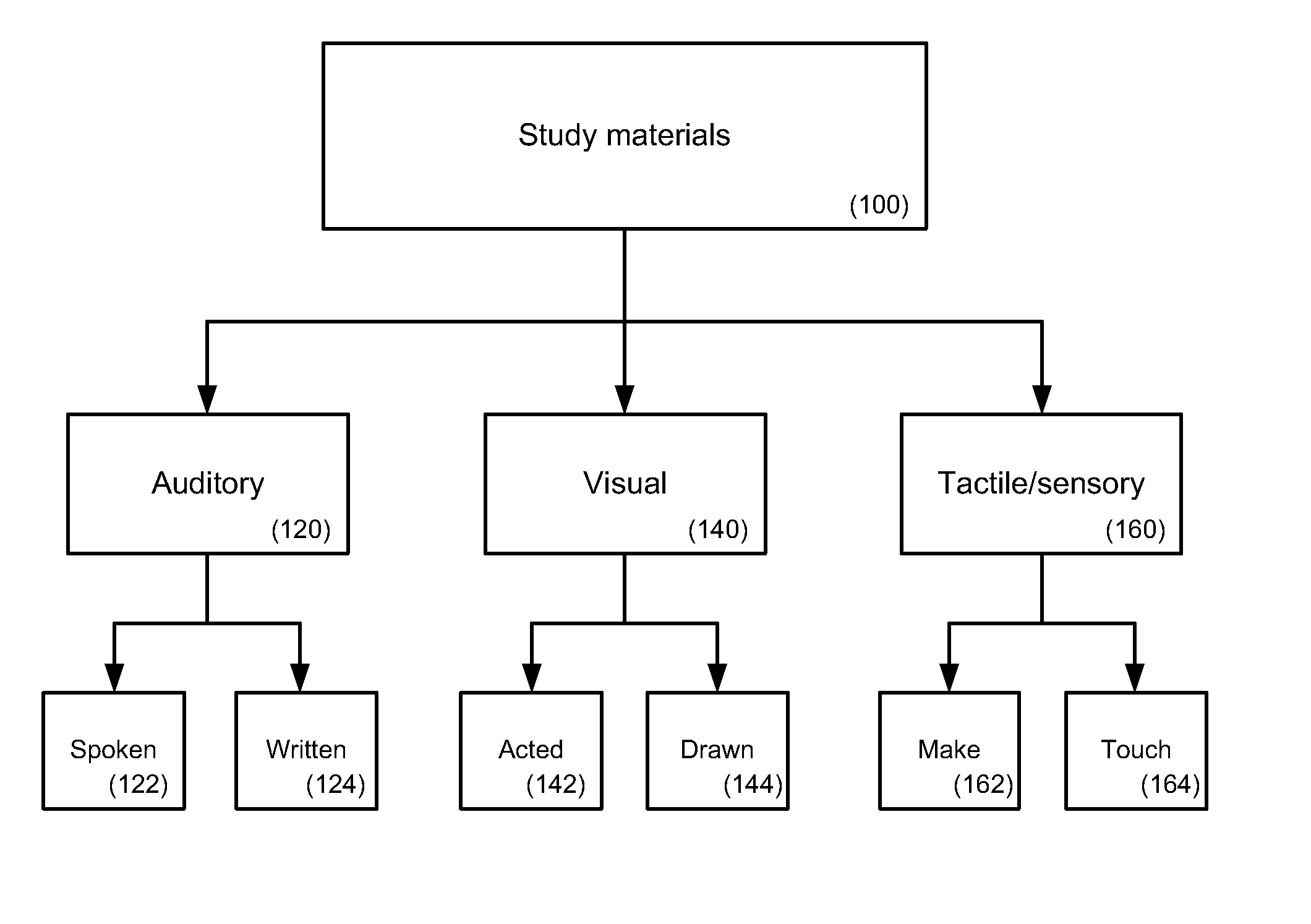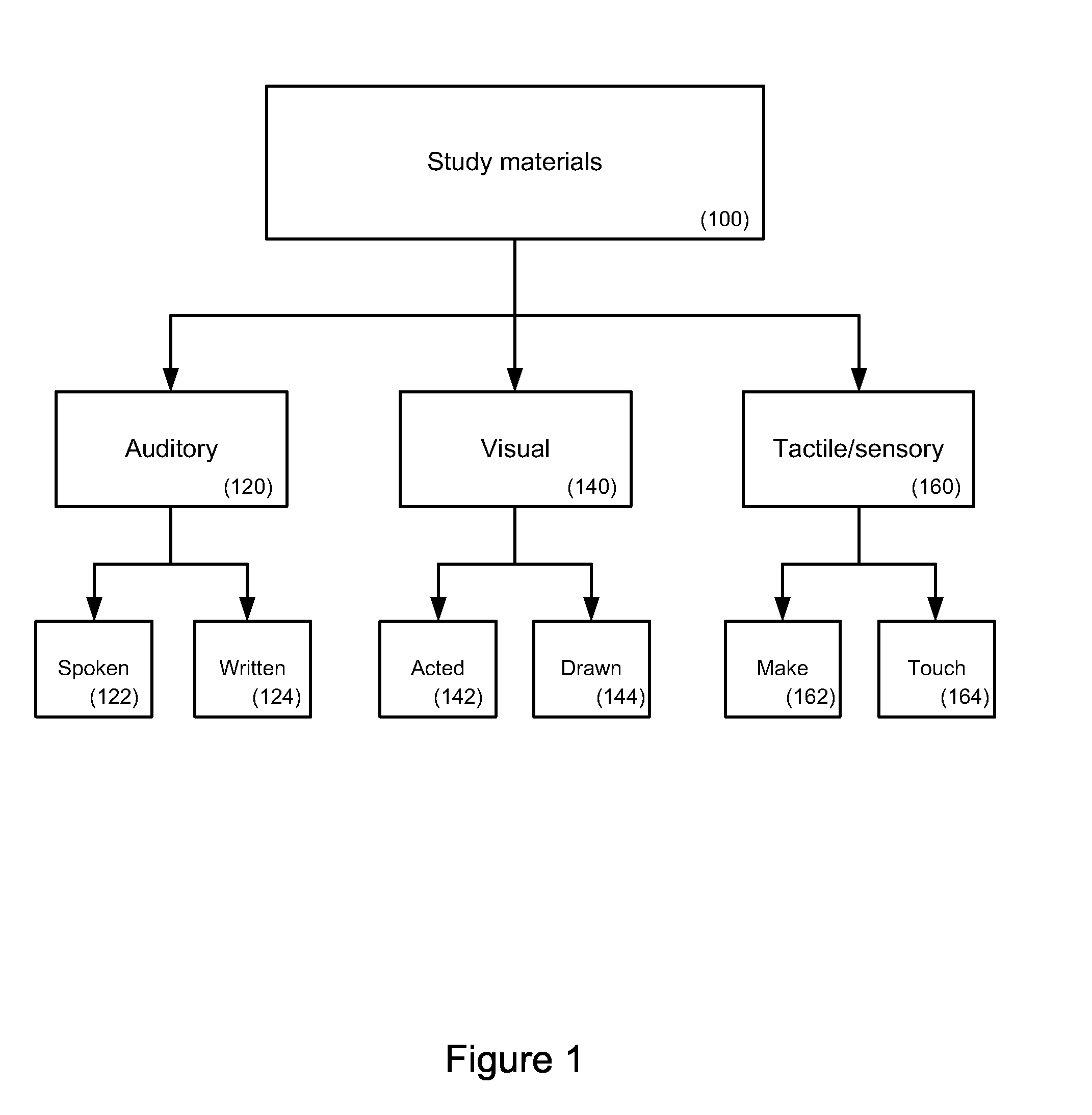For study, learning and review of educational materials
a technology for learning materials and educational materials, applied in the field of learning aids, can solve the problems of inability to recognize, study aids that fail to make use of other competencies, and disadvantages, and traditional study aids have failed to recogniz
- Summary
- Abstract
- Description
- Claims
- Application Information
AI Technical Summary
Benefits of technology
Problems solved by technology
Method used
Image
Examples
example
Board-based Review
[0040]In one example of a game, set up includes a plurality of steps. Users may be divided into study groups of two or more people. Up to four teams may play at once in the example. A speed of play is agreed among the groups. An average game takes about 60 minutes using a 6-sided die and 1-minute timed turns. For faster play, an 8- or 10-sided die can be used and / or the timer can be set for less time. A roll of the die may be used to determine which team goes first. For example, highest roll goes first, moving left to right. Each team's individual members may sit in the order that they will play for their team, moving left to right. A placeholder is placed on the START space on the board. (The START space is the area where four colored boxes are “stacked” to form a square, located on the left side of the board.)
[0041]The question cards may be shuffled and dealt face down by color into four separate piles. Each of the four colored-coded decks may be placed in their ...
PUM
 Login to View More
Login to View More Abstract
Description
Claims
Application Information
 Login to View More
Login to View More - R&D
- Intellectual Property
- Life Sciences
- Materials
- Tech Scout
- Unparalleled Data Quality
- Higher Quality Content
- 60% Fewer Hallucinations
Browse by: Latest US Patents, China's latest patents, Technical Efficacy Thesaurus, Application Domain, Technology Topic, Popular Technical Reports.
© 2025 PatSnap. All rights reserved.Legal|Privacy policy|Modern Slavery Act Transparency Statement|Sitemap|About US| Contact US: help@patsnap.com



